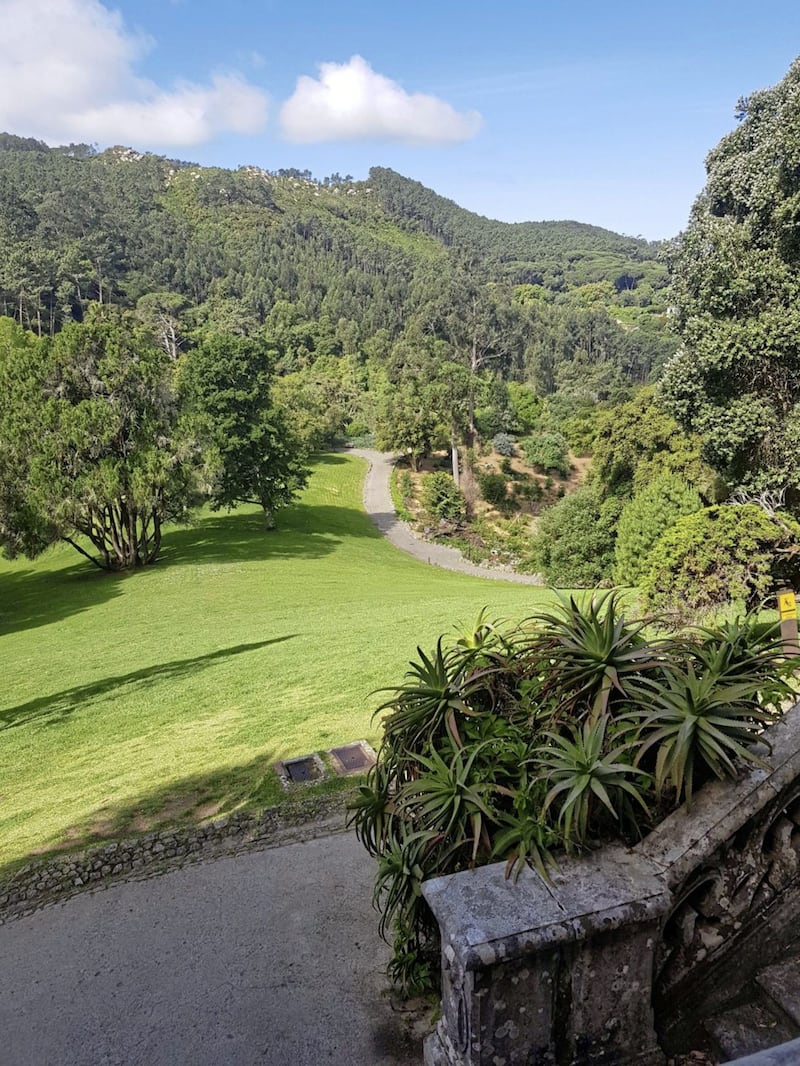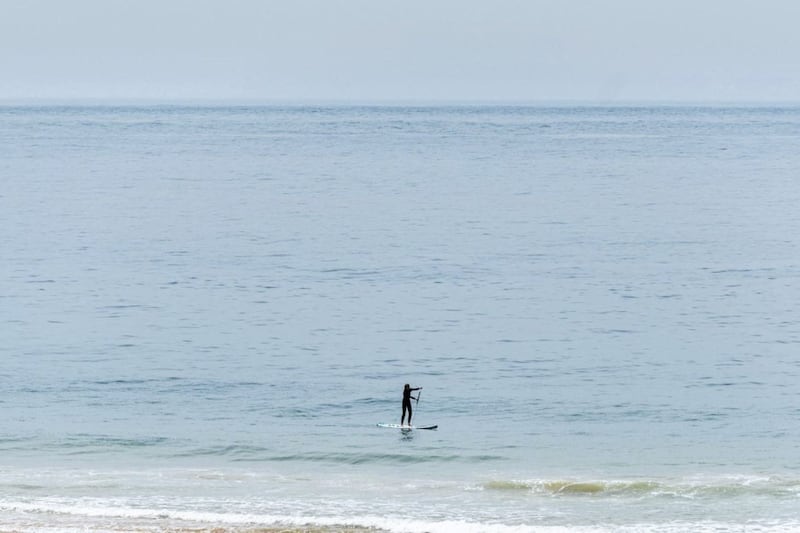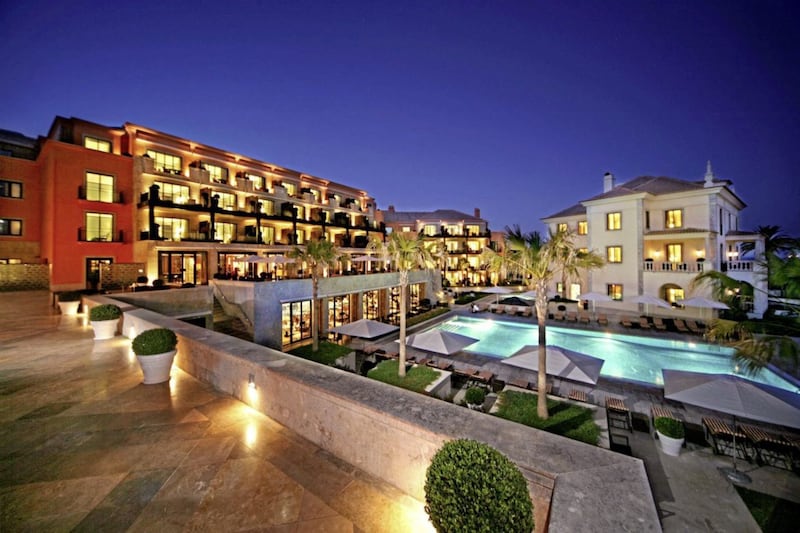IT'S DARK inside the cluttered boathouse, where salt-spattered windows make it impossible to peer inside. This, at least, gives me some relief as I struggle to cram my reluctant middle-aged body into a wetsuit.
Unfamiliar with the garment, I'm not even sure I'm putting it on the right way round. By the time I emerge – hot and bothered – I'm already convinced my decision to try stand-up paddle boarding is destined for disaster. Why on earth am I risking humiliation in a place as chic and stylish as Cascais?
This Atlantic resort town west of Lisbon has long been seen as a must-do day trip from the Portuguese capital. As well as outdoor adventure, it has many attractions; beaches to suit all tastes, a higgledy-piggledy old town, and the Paula Rego Modern Art Museum dedicated to the venerable Portuguese painter.
But you can just as well use the pristine suburb as a base for exploring Lisbon and its surrounding area, including the beautiful English gardens and palace of Monserrate at Unesco World Heritage site Sintra.

When it comes to watery pursuits, I should have had more faith – not just in my own abilities, but in Nick and Wolfi from SurfnPaddle Cascais (surfnpaddle.com).
At sheltered Duquesa Beach, their individual attention helps get me afloat. The first stage is an onshore briefing from Nick, a surf-mad Merseysider who married a Brazilian girl and set up a surfing school with her in Cascais.
Then I launch my board across breakers that are all of two feet high to meet Wolfi, my tutor and a competitive paddle-boarder, who was born in Austria but now makes and markets paddleboard wetsuits internationally from his Cascais base.
Once I overcome my collywobbles, I discover that my punting skills, acquired decades ago on rivers Cherwell and Cam, have a direct application to paddle boarding. There is an unexpected serenity from propelling myself rhythmically across the bay under my own steam – and a huge sense of accomplishment from taking on a new challenge at a time of life when it's easy to fall into a rut.

I'm staying at the five-star Grande Real Villa Italia Hotel & Spa, previously the home of Umberto II, the exiled last King Of Italy. A sense of decadence still clings to the residence, and while piling my plate at breakfast I'm amused to note that vodka, tomato juice, Tobasco and Worcester Sauce – all the makings of a perfect Bloody Mary – are laid out in a discreet corner.
The Villa Italia's basement houses a spa and hydrotherapy complex, inspired by the underground shrines of the ancient world. To enter, one descends a flight of marble stairs, with tiny aqueducts tinkling on either side. Beyond the mysterious portal, the hydrotherapy pool and relaxation areas have an airy, sky-lit brightness.
A 50-minute body scrub and massage turn me into an acolyte of whatever goddess is being worshipped here. With liberal use of sunflower oil (no, not the sort you buy in the supermarket; think wafting aromas of health-giving fresh seeds) my rough skin and ill humours are sloughed away. The therapist uses a cabaca, or bottle gourd, as well as her skilled hands, to unknot my aching post-paddle muscles.
If the weather is fine, then sunrise yoga is available on the beach. My class is forced indoors by threatening skies, but still does a great job of boosting my physical awareness and calming my mind. Sonia from Salty Pelican Surf & Yoga Retreats (saltypelican-cascais.com) soon has me tying myself in knots on the mat during a session of rebalancing yin yoga.

And at sunset, Cabo Da Roca is the place to view the Green Flash – a meteorological optical illusion where a green dot appears to hover above the setting sun.
This is Europe's most westerly point, and in places, the coastline has the wild grandeur of the West of Ireland. The headland has long since surrendered to coach parks and selfie-sticks, but the surrounding National Park of Sintra-Cascais is great for walking and mountain biking. In the company of a guide, Francisco, from Walk Hike Portugal (portugalwalkhike.com), I tramp crumbling cliffs held together by cactus plants. The boulder-strewn cedar forest of Sintra Mountain is another tranquil hiking-and-biking option.
On a coast renowned for its seafood, choosing my favourite ocean-side restaurant becomes a dilemma. Accompanied by a spectacular view of waves crashing on rocks, fine dining is served at the Farol Hotel.
But the modest Da Adraga Beach Cafe (restaurantedaadraga.com), where multi-generational Portuguese families dine together after knocking the sand out of their shoes, sets the bar high by serving goose barnacles. These fearsome objects are prised from the inter-tidal zones of rocky shores, a dangerous and time-consuming business. For main course, a freshly-caught sea bass is paraded in front of the table. Expertly cooked and filleted, it is served simply with lemon on a giant platter.
At Maria Pia Seafood Lounge (restaurantemariapia.pt), overlooking Cascais Harbour, I eat a spicy fish and potato stew made with fresh finds from that morning's market. Outside, yachts form a riveting spectacle as they negotiate the lively wind and tides to enter the marina.
Wherever you go in Cascais, there's a celebration of the sea – whether you choose to get in the water or enjoy its bounties on dry land. Both, I've discovered, are fun – although it's safe to say, getting dressed for dinner is far less of an ordeal.
FACTFILE
:: How to get there
TAP (flytap.com) flies from London to Lisbon from £92 return.
:: Accommodation

Doubles at the Grande Real Villa Italia Hotel & Spa (granderealvillaitalia.realhotelsgroup.com) cost from €140/£126 per night including breakfast.
:: For more information on the destination, go to visitcascais.com.








